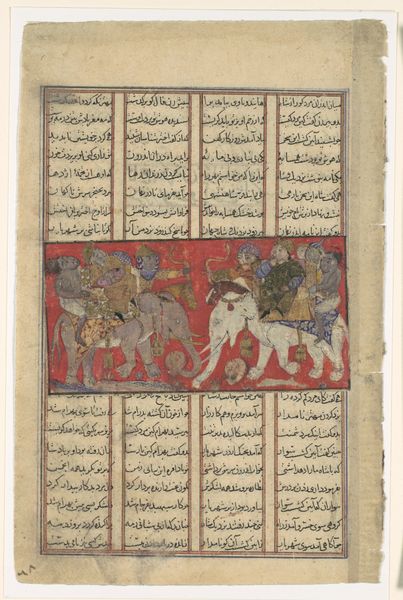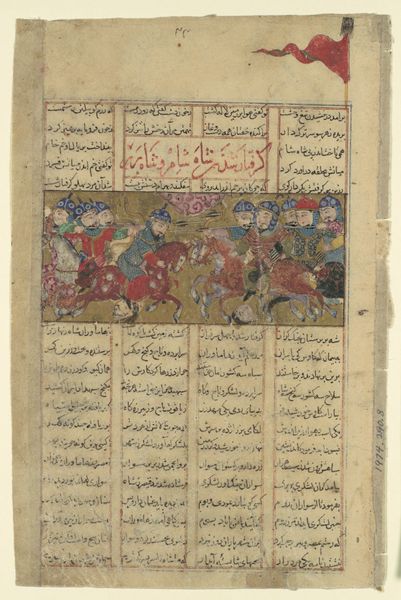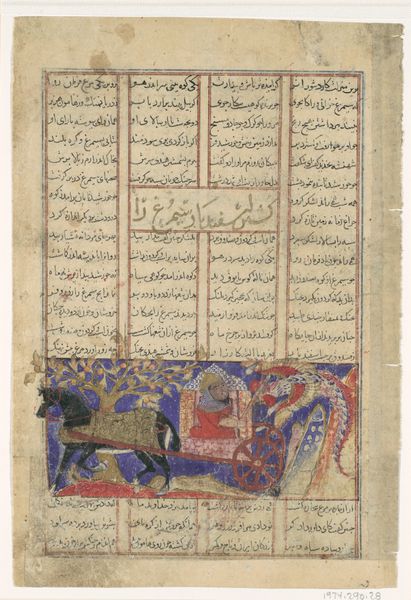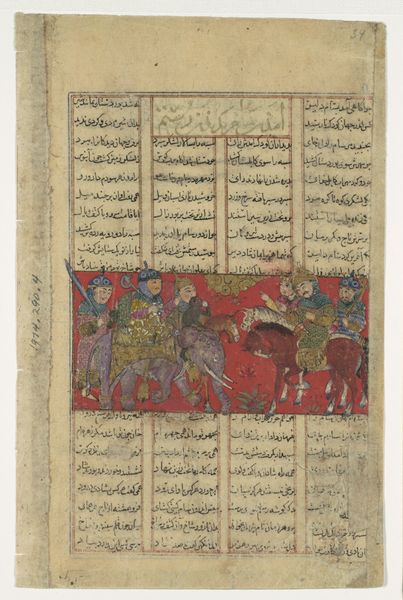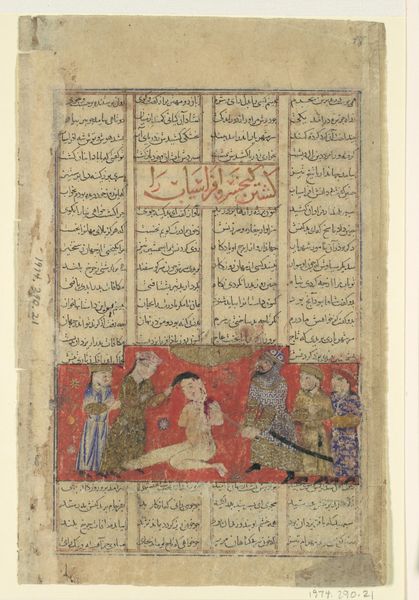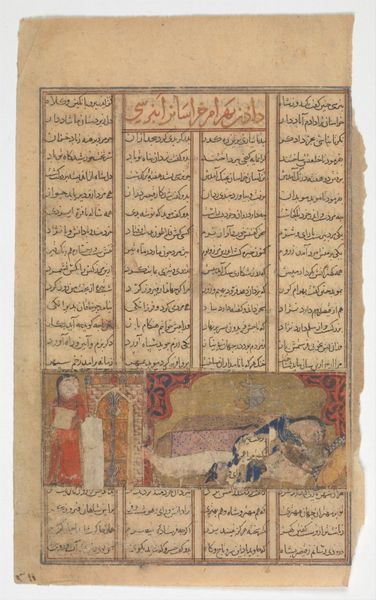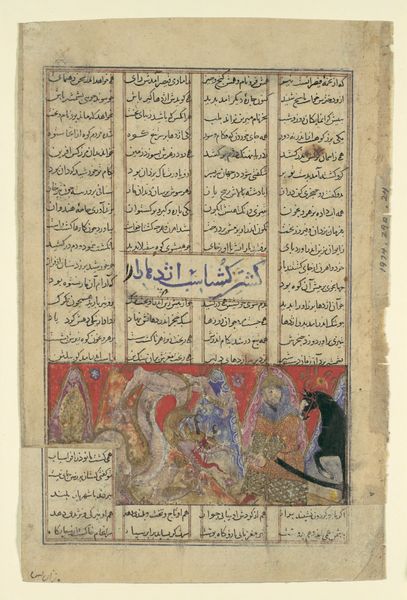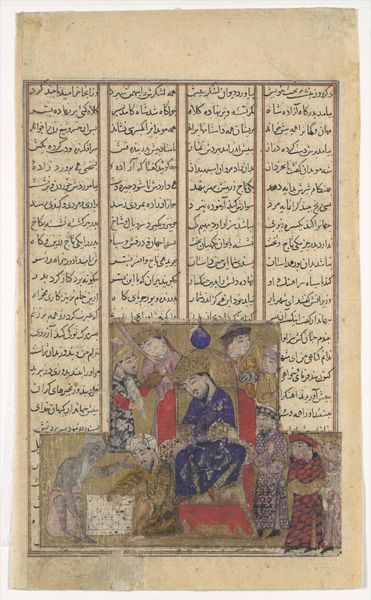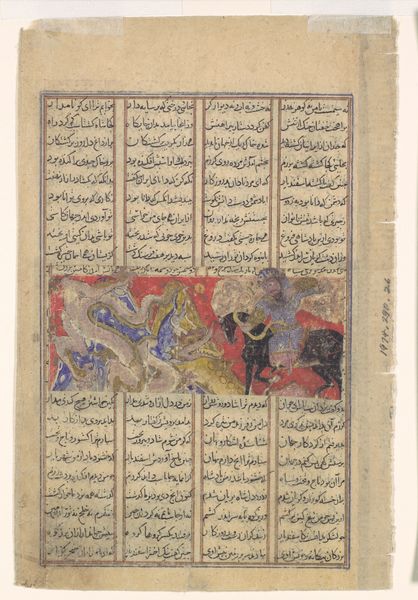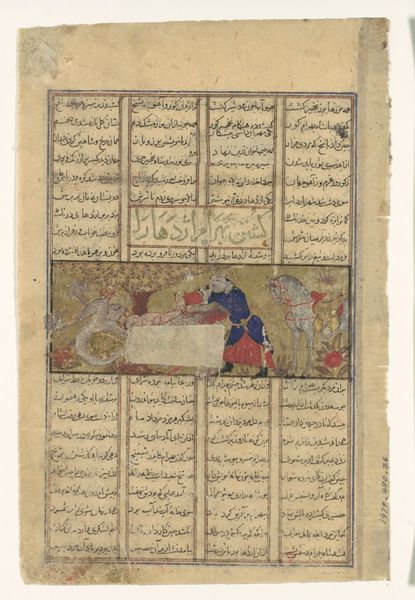
"Isfandiyar Slays Arjasp", Folio from a Shahnama (Book of Kings) 1305 - 1365
0:00
0:00
painting, ink
#
narrative-art
#
painting
#
death
#
figuration
#
ink
#
coloured pencil
#
ink colored
#
men
#
islamic-art
#
history-painting
#
sword
#
miniature
#
watercolor
Dimensions: Page: H. 8 1/16 in. (20.5 cm) W. 5 5/16 in. (13.5 cm) Painting: H. 1 13/16 in. (4.6 cm) W. 4 1/4 in. (10.8 cm)
Copyright: Public Domain
Editor: I'm looking at "Isfandiyar Slays Arjasp," a folio from a Shahnama, or Book of Kings, created between 1305 and 1365. I find the intense colors and tightly packed figures quite striking. It seems to be a pivotal, probably violent, moment. What do you see in this piece? Curator: I see a convergence of potent symbols deeply embedded in Persian cultural memory. Consider the sword, a recurring motif. Beyond its obvious association with death, it represents justice, authority, and the divine right to rule. Editor: So, it's not just about a fight, it's more symbolic? Curator: Precisely. Think of the figures as embodiments of abstract concepts, archetypes engaged in a cosmic struggle. The vibrant colours aren't merely decorative. Red, often associated with passion and sacrifice, dominates the scene. What might that imply? Editor: Perhaps that this particular act is meant to show extreme heroism? Like a blood sacrifice for the greater good of a people? Curator: That’s an excellent observation. And what about the surrounding script? How might it further influence our interpretation? Editor: It seems to serve as a written record or perhaps a commentary on the scene, a method of providing a fixed cultural narrative through time. The integration of text and image feels very holistic, like memory is embedded within the image and words. Curator: Indeed, the text reinforces the permanence of the story. By witnessing this interplay of text and image, we are not only viewing a depiction of an event but also participating in a cultural ritual, recalling and reaffirming shared values. Editor: I see. Looking at this, I now feel as if I'm touching a small part of the cultural psyche. Curator: Precisely. The beauty of art lies in its ability to transcend time, allowing us glimpses into the complex and multifaceted dimensions of our shared human experience.
Comments
No comments
Be the first to comment and join the conversation on the ultimate creative platform.
